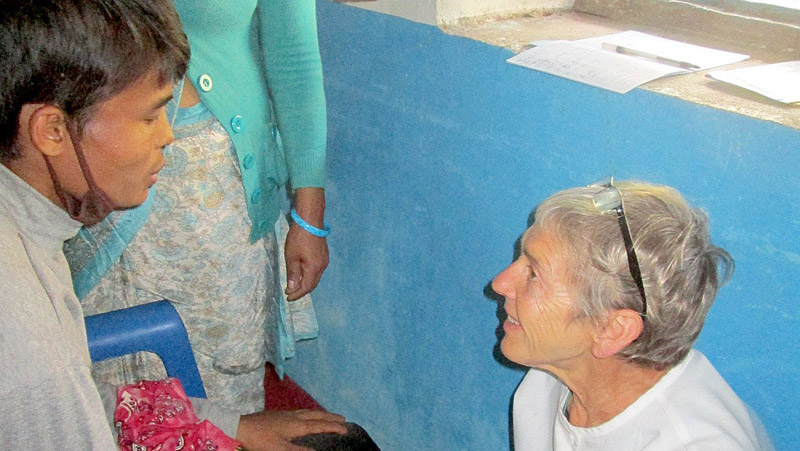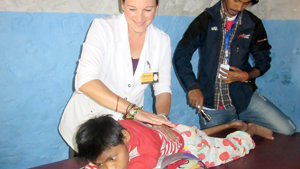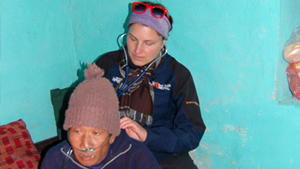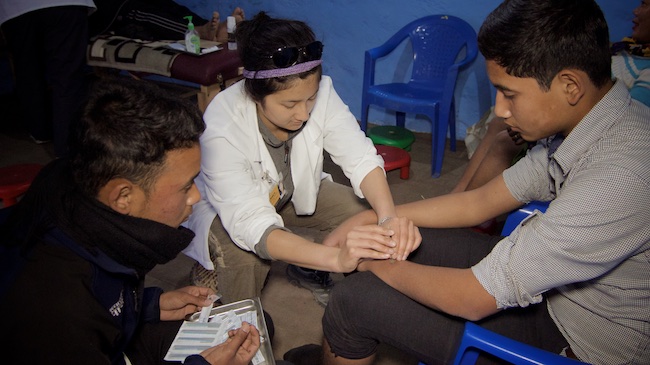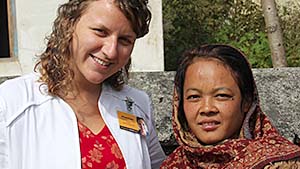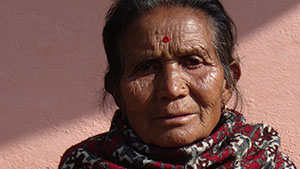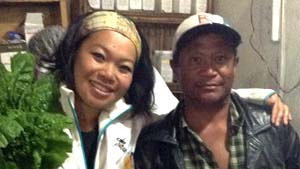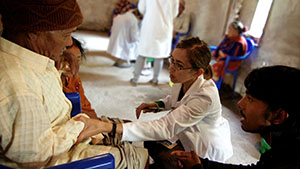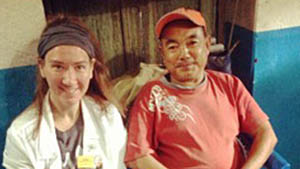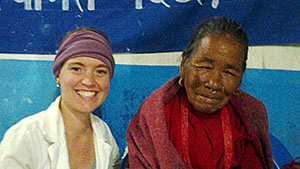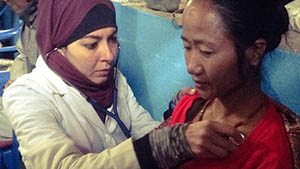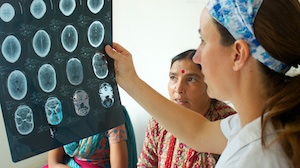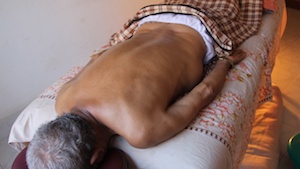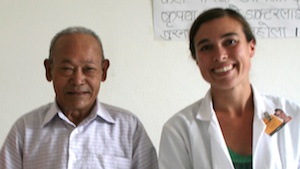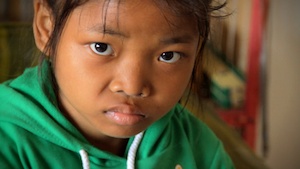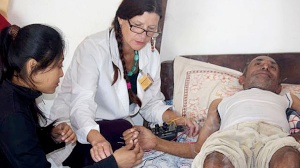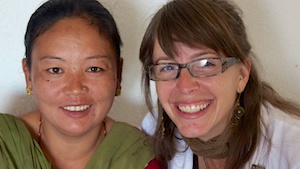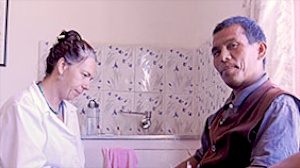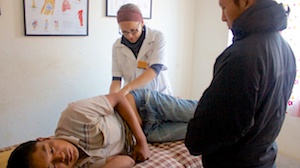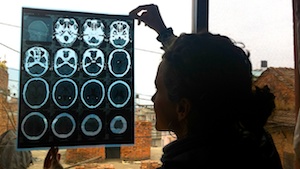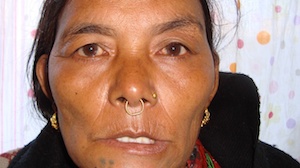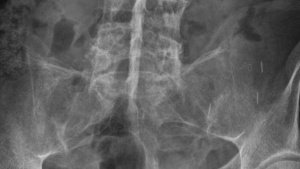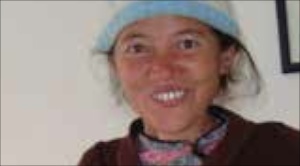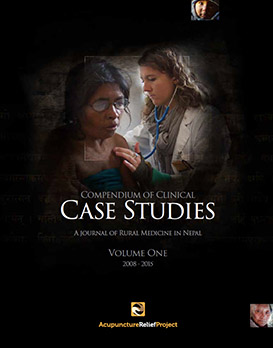Jessica Maynard MAcOM LAc
February 2012
Overview
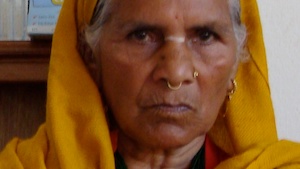 72-year-old female presents with left hand tremors that extend up the arm and into her neck and jaw. Tremors have been present for 2 to 3 years. Hospital and doctor records report Parkinson’s disease. Over the course of treatments, the patient experienced periodic relief, with regression and return of tremors. Overall, her posture, mood, outlook and sense of independence improved, leading to a significant improvement in personal affect over time.
72-year-old female presents with left hand tremors that extend up the arm and into her neck and jaw. Tremors have been present for 2 to 3 years. Hospital and doctor records report Parkinson’s disease. Over the course of treatments, the patient experienced periodic relief, with regression and return of tremors. Overall, her posture, mood, outlook and sense of independence improved, leading to a significant improvement in personal affect over time.
SUBJECTIVE
Patient presents with tremors in her left hand and arm, extending up through her neck and into her face and jaw. Hospital charting from 6 months prior shows a diagnosis of Parkinson’s disease. The patient reports having previously taken tri-hexyphenidyl hydrochloride, propanolol hydrochloride, levadopa and carbidopa tabs, but states that she is not on them now and is seeking a cure from Chinese medicine and acupuncture. She also reports having been diagnosed as a diabetic and declares that she has blood sugar levels tested regularly. The most recent reading was 145 mg/dL.
O-Tremor symptoms have been present for 2-3 years.
P-Patient reports that warm weather alleviates her symptoms and cold weather exacerbates.
Q-In addition to tremors, she experiences numbness in her tongue and has trouble speaking clearly, a symptom that fluctuates on a weekly basis. She reports mouth dryness, dizziness and blurry vision when walking.
R-Tremors begin in her left hand, move up into her arm, and eventually spread to her neck and jaw. During the course of treatment, the patient reported experiencing tremors in her right hand and arm as well.
T-The patient reports constant tremor while in a waking state throughout the day and evening.
Objective
The patient presents with stooped posture while walking, arms held closely in front of her. While she sits in the treatment chair, her hand and fingers tremor with an inch of movement back-and-forth. Her lower jaw shakes when she is not speaking. The tremors disappear with movement, and her movements are bradykinetic. She exhibits signs of depression from day-to-day—diminished affect, low voice, frequent sighing and responds to questions about her condition with frustration.
From treatment-to-treatment, her tongue changes from pale and dusky to more red, and sometimes purple-tinged. Her pulse is thin and easy to push through, but at times will have a wiry/tight quality or will show a superficial flooding or slippery quality.
Assessment
DX: Parkinson’s Disease
In order to differentiate the patient’s diagnosis of Parkinson’s disease from benign essential tremor, it is important to clarify the differences. Benign essential tremor—Typically hereditary, benign essential tremor is characterized by tremor present with movement and absent at rest. It is normally bilateral and increases with age (Merck, Mayo Clinic). Essential tremors are not associated with stooped posture or shuffling gait, although they may cause other neurological symptoms. Benign essential tremors typically start in the hands, and can eventually affect the voice and head.
Parkinson’s disease—Characterized by voluntary and involuntary movement affected by tremors, the symptoms typically begin unilaterally, but can progress to affect the body bilaterally. Symptoms are mild at first, and the severity of the disease is quite variable from person-to-person. Cardinal symptoms are: tremors, rigidity, bradykinesia, postural instability and Parkinsonian gait (characterized by short, shuffling steps and diminished arm swinging). Secondary symptoms include: anxiety, confusion, memory loss, dementia, constipation, depression, difficulty swallowing, slow, quiet speech and monotone voice.
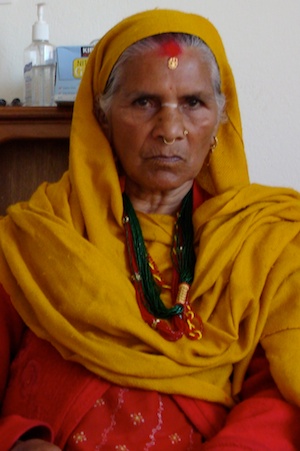 To note, occurrences of misdiagnosis can happen. There are no medical tests for this disease and a definitive diagnosis of Parkinson’s is not possible while a patient is still alive. The most accurate diagnosis would be made by a neurologist who specializes in movement disorders. Therefore, the true diagnosis in this case study is speculative and impossible to confirm.
To note, occurrences of misdiagnosis can happen. There are no medical tests for this disease and a definitive diagnosis of Parkinson’s is not possible while a patient is still alive. The most accurate diagnosis would be made by a neurologist who specializes in movement disorders. Therefore, the true diagnosis in this case study is speculative and impossible to confirm.
The patient exhibits stooped posture, impaired gait (she requires help walking to clinic on certain days), and holds her hands stiffly in front of her, while walking in a shuffling manner. She also experiences tremors while seated with hands in her lap (at rest). It appears likely that her condition is, in fact, Parkinson’s disease. During the course of treatments, she displays intermittent confusion and memory loss, both in repetitive questions, the need for counseling on her condition, and interpreters stating that she is incoherent. These are indications of possible mental degeneration accompanying the Parkinsonian condition.
TCM DX: The patient shows a mixed excess/deficiency pattern consisting of underlying deficiencies leading to uprising of excess, Kidney yin deficiency and Liver blood deficiency, with an uprising of wind in the channels, Liver qi stagnation and uprising of Liver yang.
KI yin deficiency is apparent with thin pulse, red tongue tip (empty heat) and low back pain, and can partially be assumed with age (72) of the patient. Liver blood deficiency is apparent in the thin pulse that is easy to push through, the dizziness and blurry vision with activity, and dryness of the tongue. Wind in the channels (due to blood deficiency) and uprising of yang, is exhibited by the tremors, and can be detected in the pulse. Liver qi stagnation is exhibited by frequent sighing and mood swings from day-to-day. Blood stagnation and empty heat alternate in her pattern. Tremors are observed by the practitioner as more pronounced when stagnation is present, indicated by the dusky and/or purple tongue alternating with a redder tongue tip concurrent with less pronounced tremor of the hands and mouth.
INITIAL PLAN
Treat 3 times per week for 3 weeks. Diminish wind in the body while tonifying underlying deficiencies.
Typical treatment: Scalp tremor line, later with electro-acupuncture. ST36, LR8, SP6 to nourish blood, KI3, LI4 and LI11 to diminish stagnation and clear heat, as well as locally to treat tremors in the arms. GB20 is used to expel wind. Tiger warmer therapy is applied to the left arm, and often both arms and the sides of the face and neck. Electro-acupuncture typically connecting points LI11 and Hegu (LI4), or LI5.
Additional treatments: ST3, ST4, ST41 and LR3. Parkinson’s may be a condition of reversal of Stomach channel qi, which enters the GB channel through ST8(Janice Walton-Hadlock). An intention of descending Stomach channel energy has come to be a focus in treatment.
Herbal formulas prescribed include Gastrodia 9 (Seven Forests formula) to diminish tremors and Tao Hong Si Wu Tang to move and nourish blood.
Patient is encouraged to engage in light movement of the body, and to receive massage from family members. She is referred to the physiotherapist, though exhibits significant resistance to exercise..
OUTCOME
The patient arrived for treatment daily for a total of 6 weeks.
Tian Ma Gou Teng Yin (for wind) and Liu Wei Di Huang Wan (for Kidney yin and blood tonification) were later added to her treatment plan.
She only had 1 visit to physiotherpaist.
Given the advanced state of the patient’s condition, it was clear that acupuncture may not decrease symptoms of tremor over the longterm, but may help on a short-term, symptomatic basis. The patient experienced relief the night after each treatment, less numbness in her tongue, and an increased ability to speak clearly. However, her condition would subsequently relapse after each period of relief, so it cannot be known whether the acupuncture and herbs were helping, or if it was a natural regression of symptoms typical of the disease. Significant time was committed to answering the patient’s (sometimes repetitive) questioning of her condition, educating her about the severity and irreversibility of the disease, and encouraging her to think positively and actively engage in her own process of healing.
What was striking over time was the improvement in the patient’s mood and affect. She began to walk to clinic on her own on a regular basis and was visibly happier over the course of treatments. Her posture improved, and she became more engaging, which despite her shifting moods, remained at a higher level than when she originally came into the clinic (although this can be due to trust and relationship that grows over time between patient and practitioner). As seen within the first 5 treatments, her mood changed significantly and her speech clarified. She was more likely to engage in conversation, both with her healthcare provider, as well as with family, and began to open up.
In subsequent treatments, she exhibited moods that showed a decline in outlook, including frustration over not experiencing the amount of relief desired, and seemingly, over a lack of control over her body and her life. During the fourth week of treatment, the patient reported a remarkable improvement. On 1 visit, she stated that she experienced the feeling of being “completely cured” following her treatment the day before. This type of relief, although short-lived, also added to the hope and positive outlook that overrode her frustration throughout the course of treatments. After 7 weeks in treatment, she went home to her village in a warmer climate, returned to the clinic during the ninth week, and reported a complete disappearance of symptoms while she was home. This brings to question both the power and possibility of acupuncture, as well as what the role of stress-reduction can play in Parkinson’s disease and other neurological disorders. Acupuncture and Chinese medicine has been shown to reduce stress, and if relief of symptoms from disease is a secondary outcome, then the importance of this therapy is of paramount significance.
In the Vajra Varahi clinic, this patient experienced periodic relief of symptoms, with relapse and gradual decline. Parkinson’s is a degenerative disorder, and slowing the progression became the main focus in direct treatment of the disease. In addition, the role of the acupuncture practitioner for this case has been one of guiding healthcare and outlook, counseling her towards a full understanding of her condition so that eventual acceptance is possible, and helping to facilitate a state of contentment and happiness that can be applied to her life as a whole.












